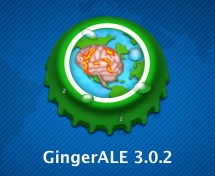Imaging
Describes the technical details of the data processing stream. From early steps, like the scanner's strength and resolution, to which software was used to align the images, and further analysis steps.
One requirement for inclusion into the database is spatial normalization into a standard coordinate system. For some history and technical details on spatial normalization, see Scribe's training video on brain templates, registration and transforms.
Registration Software
The analysis software used to align the images to a well-known reference space.
Brain Template
The brain template used to align images to a common stereotactic space. One of the first standard brain templates was the MNI305. It was replaced by the newer ICBM152 template in most spatial normalization software in the early 2000s.
If data was aligned to Talairach space without using a template, this field should instead record which Talairach atlas was used (usually '67 or '88, the atlas publication year).
Transform
If the aligned data was transformed to another coordinate space (usually MNI -> Talairach), record the transform used here.
If MNI coordinates are reported in Talairach and the transform is not specified in the text, indicate the transform is "Unknown" and make a note in the short description.
All MNI coordinates will be automatically converted to Talairach space using the icbm2tal transform (Lancaster et al., 2007). All MNI coordinates converted to Talairach space via the Brett transform in the original publication will be subject to 2 transforms: (1) reverse-Brett to convert back to MNI space and (2) icbm2tal for correct transformation from MNI to Talairach space.
Reference Space
The standard coordinate space used when reporting coordinates. The analysis software, brain template and transforms can be used to infer which reference space was used. If reference space is unknown or if fields are contradictory, a note describing the issue should go in the short description.
MRI Field Strength
The strength, in Tesla, of the MRI magnet used to acquire data.
Resolution (mm)
The final voxel size or resolution in millimeters (mm), for example "1x1x1". If this parameter is not provided in the paper, provide the Field of View (FOV) and the slice thickness in mm.
Smoothing Kernel (mm)
The size in millimeters of the Gaussian smoothing kernel used.
Short Description
A free-form text area provided to clarify the information in any fields. Especially useful if any analysis information seems contradictory.


